From Switzerland, it's across the border to Austria. From the border we had planned to stop at Bregenz, named one of Austria's prettiest towns on Lake Constance, the third largest lake in all of Europe, but the timing was off. It was the equivalent of our labour day weekend and every accommodation, but one was booked, so straight to Innsbruck, it was.
Leaving the train and heading by bus to our accommodation, the first landmark we note is the Bergisel Ski Jump which has hosted both the Olympic and World Championship games. Here Austrians battle for their country's honour in sport, while two hundred years ago Tiroleans fought a battle for their country's freedom on this ground. It looks like an enormous sculpture and the architect who designed it (Zaha Hadid) won an international award for her work.
The Old Town is enchanting with its many hand-painted buildings, bay windows, and unique old signs. It calls us back.
 |
| Gate to Old Town |
SOME BUILDINGS
 |
| On a church |
WINDOWS
INCREDIBLE SIGNS
 |
| Freshly grated horseradish on the left & a few sticks of cheese on top. |
Another famous landmark is the beloved clock tower (Stadtturm). Built from 1442 to 1450, not only did it announce Innsbruck's wealth to the world, but its ability to defend itself and care for its citizens. The viewing deck (148 steps up) was a place where sentries could watch for danger such as fires and intruders and they announced the hours of the day in a time when everyday folk did not have clocks or watches. For centuries it was the heart of political activity and discourse and served as a voice for the people.
 |
| You can see tourists walking on the observation platform |
Statue
This statue is across from the Imperial Palace (The Hofburg, former Hapsburg Palace) which we ran out of time to tour. The palace is much larger than even two photos can capture. The interior has been completely refurbished to its former glory and is filled with 18th. century furnishings, tapestries, and artwork.
The palace has its own garden, now six hundred years old nearby (Hofgarten).
... and of course, its own church
A shopping pedestrian mall leads to the old town and here finally, I find hiking shoes and can throw out my glued-up, falling-apart runners...and am ready for the Alps. Paul gets a pair too.
Can't resist photos of these cute lamps
Across the river from Old Town - reminds us of Norway
The next day finds us at SWAROVSKI KRISTALLWELTEN. This is a place we never thought we’d visit, not really our thing, but the grounds here were incredible, enjoyed by adults and lots of fun stuff for kids. There must have been a million crystals in the outdoor displays alone.
There are speakers throughout the outdoor area with sounds of water, or of crystals tinkling in a breeze.
The displays inside were amazing too. We had no idea that Swarovski makes optics for binoculars, lenses for sunglasses, glittery pens, watches & cell phone cases, and tableware, in addition to all the jewels and statues that are their stock in trade.
 |
| The GIANT-who set out to experience the world & settled in Tyrol |
 |
| Just two of several creative sculptures that display Swarovski jewelry. |
 |
| Not the Crown Jewels, but very eye-catching. |
 |
| Attractive tableware in a variety of colours. These are coffee and tea services. |
 |
| Each jewelry display case had a river of loose crystals flowing through it - highly effective. |
ZELL am SEE
The next stop was to be Salzburg, but a bit of nighttime reading spots that this place on the way has been named one of the most beautiful cities in Austria, so it's off the train here for two nights. The little hotel we are staying in is the nicest of our journey and presents us with a Visitor Card so that buses and attractions are free.
The town’s population in 2019 was less than 10,000 (most
recent data) and it’s just buzzing with tourists. The name refers to both the Zee Valley in
which it is situated and to the 68-meter-deep Zeller See (lake) at its heart. This place has summer activities with the
lake and winter activities with the ski hills.
We are grateful to have stopped in this pretty place.
Day 1 involves walking the Old Town and the lake promenade and I buy one more much-needed piece of clothing. I simply can't buy anything to wear in hippie-chic Tulum.
The first thing we notice is how peaceful the activities on the lake are - all recreational watercraft are powered by oars, paddles, or electricity.
We find these electric boats that ride low in the water, with two bench seats and a steering wheel especially attractive, and they rent out like hotcakes.
A building that stands out on the shore of Lake Zell, on its own private peninsula, is the Grand Hotel. Dating from 1894, it's been thoroughly modernized for today's travellers.
 |
| Huge flower boxes on the promenade & displays in Old Town feature sunflowers. |
A few photos from around town
 |
| Love this Kitchen Witch over a shop. |
 |
| One of several stunning statues down by the water. |
SIGMUND THUN GORGE
Day 2 finally gets us out for a hike in the Sigmund Thun Gorge at nearby Kaprun and trying out our new hiking shoes. The day is complete with a boat tour on Lake Zell on the sundeck lounge of the MS Schmittenhoha ... all courtesy of the tourist card we were given at check-in.
Here, 263 steps lead through the 320-meter-long gorge. It's a beautiful and thrilling walk. The boardwalk and stairs are well-built and sturdy.
 |
| So pretty |
 |
| Put our rain jackets on to get past this. |
 |
| Walking around the reservoir. Love the wood loungers everywhere. |
 |
| The dam is at the end. The reservoir is on the other side. |
 |
| On the way back to the entrance, looking down at where we had been. |
At the end of the gorge, a reward is a peaceful recreation area at a reservoir, which has an outdoor exercise area, a children's playground and a chalet that sells food and drink. People swim, fish from the shore and take advantage of the water and great weather. From there the hiking paths are many, with the longest over 20 km. The paths are so smooth and compact that many people bicycle on them.
Back to Zell am See and onto the boat for an hour's ride around the lake.
 |
| The fortress from different angles |
Obviously, the role of any fortress is that of defense and so there is a large section of the fortress museum dedicated to its military history.
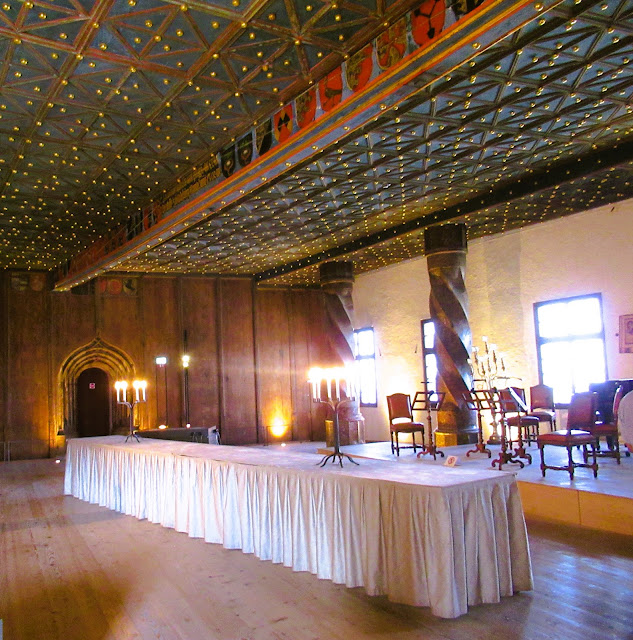 |
Elaborately decorated huge, enamelled steel stoves provided heat for the fortress. Below are three of them. All are missing their decorative feet and the decorative statues that would have crowned the piece.
On the way out of the fortress is a small museum dedicated to Marionettes. This is what the museum says about the puppets:
 |
| This photo of the graveyard was taken from high in the catacombs |
The grounds include lots of green space, other water features, grottos, statuary, a dwarf garden, a zoo (which we skip) as well as the castle and trick fountains. There's also a folk art museum associated with Hellbrunn that is just down the road and a climb up the mountain.
Trick fountains were a 'thing' in Europe 400 years ago and Markus intended to have the most and the best.
The face below also powered by water looked straight at you then its tongue stuck out and eyes rolled back until only the whites were seen.
St. Michael's Chappel in Hallstatt sits on the side of a mountain and therein lies the problem - the graveyard is too small to serve all the Catholics who attend the church and who need to be buried in sanctified ground. The solution: after 10, 15, or 20 years when the graves need to be reused, the buried bones are exhumed, left out in the sun to bleach, then put in the ossuary (underground charnel house).
In the ossuaries we saw in Portugal, the bones and skulls on display seemed to remind the living that in death we are alike regardless of skin colour, wealth or awards and so humans need to pursue spirituality and salvation, rather than possessions and status.
However, over time, the concept of individuality became strong and so in this part of the world families wanted to be able to identify the skulls of their kin as they used to have a marker on the grave site. Once the skulls were bleached by the sun, they would be painted according to the family's wishes. They could choose no name, decoration only, or either initials or name with the decoration and most included a cross. Red and green are the common colours used.
The paintings are traditional: ivy (life), laurel (victory), oak leaves (glory) and roses (love).
Once painted, families would often arrange the skulls of family members next to one another.
Photos are not allowed in the charnel house. Go here to see copyrighted photos of the painted skulls.
HALLSTATT SALT MINES (SALZWELTEN), a UNESCO World Heritage site
These salt mines have been in operation for over 7,000 years. Yes, you read that right. That's the pre-historic, Neolithic era. Imagine! Archaeological finds, well-preserved in the salt, are rich with jewelry, pottery and weapons from the burial grounds and have been dated and recorded.
This time is so significant to European history, that it is now called the Hallstatt period.
This ancient shoe makes your heart ache for the child who belonged to it. Kids were introduced to work as early as age 9. Boys swung a pick and girls held lights for the miners to see.
But I'm getting ahead of myself. The experience starts with a ride on a funicular.
At the meeting point, all are handed pants and a shirt to put on to protect our clothes from salt and the behinds from rides down the miners' slides.
The mine tour does a fabulous multimedia show underground that uses imagery, storytelling, a documentary approach to scientific and archaeological findings and real equipment to take you from that long-ago time to the forty workers today who mine the salt (AKA: White Gold).
Salt was valuable as a food preservative when there was no refrigeration, making the archbishops in Vienna who ruled the area very wealthy indeed. To eat is to survive and thrive.
Mining was dangerous work. As far back as the early 18th century the miners formed associations based on their jobs and contributed regularly so that if someone became sick or had an accident, or a woman was widowed, there was some money to help. There is no mention of whether the mine owners contributed. This reminds us of the clans of Chinese immigrants to Malaysia who helped each other out in the same way.
The mining company built Rudolfsturm Tower to defend the mine against invaders and to provide a home for the Director of Mines.
As we descend ever downward, salt lights guide us.
 |
GRAZ (translation: Little Castle)
Graz is the capital city of its region and the second largest city in Austria but is both very walkable and friendly. It was one of our favourite cities in Austria. Mostly we walked around and explored buildings and streets. Off many streets of Old Town, there are covered alleyways leading to hidden, mysterious, romantic courtyards. Being a university town, the atmosphere has a more relaxed and youthful vibe.
There's art, theatre, and music that is different from what you see in Salzburg or Vienna.
Here, for example, is an unusual 'portrait' of Tina Turner - taken through the glass window of a gallery (apologies).
Old Town Graz is a UNESCO World
Heritage site.
There's a quirky mix of ultra-modern (even avant-garde) buildings set amongst
the buildings of Old Town, such as the Kunsthaus Graz (AKA the Friendly Alien) and
the Island in the Mur (Murinsel).
Kunsthaus houses temporary exhibits and was between exhibits when we were there, but we were allowed in to explore the building. While it's a showstopper to see it from street level, it's more so to view it from atop the Schlossberg and to see it at night when the multitude of lights on its exterior turn on and off in pattern.
An early adventure was to get up to the Schlossberg, a public park and old fortress high above the town. It was on this site that the original "little castle" defended Graz and was later replaced by this enormous fortress.
Rather than take the stairs or
the funicular, the fast elevator up 473 meters is what we take.
While waiting to board the elevator, a man
came hurtling out of a chute near us. It is the tallest slide in the
world. We were in a completely different area on the grounds when it came time to leave, or Paul for sure would have chosen to descend that
way. I think I'd just get seasick with all the tight curves or wear out
my shoes and pants by putting on the brakes.
This is a wonderful place to come
for the views over the city, for the peaceful green spaces to relax or picnic,
and for the little cafes.
 |
| The clock tower is a famous landmark of Graz |
The Town Hall of Graz is such a building, situated in Hauptplatz, the enormous plaza with its glorious fountain of Archduke Johann is the center of the city. A portion of the plaza has semi-permanent tiny street food 'shacks' where one can grab an inexpensive lunch and stand at a table to eat it.
 |
| The Luegghaus with its elaborate stucco facade is home to the Swarovski store. |
 |
| The Herzoghof (painted house) with frescoes painted by the Baroque artist Johann Mayer in 1742. |
 |
| This tower houses the mighty five-ton bell that easily warned early residents of imminent danger. |
Herein lies Ferdinand II (of the Habsburg family), who ordered this grandiose mausoleum built for himself. He waged a thirty-year war on the people to defeat Protestantism and ensure that Catholicism was the only religion. It's nested in tightly with St Catherine's Church.
Hidden away through a gate and a
courtyard of the building that now houses the Styrian regional parliament is a
masterpiece of stone masonry built at the end of the Gothic period. This
"Staircase of Reconciliation" is a double-spiral staircase. The
two opposing spiral stairs come together, separate, then come together
again. It's an interesting experience to start off at the bottom with
someone and each takes their own staircase.
The Landhaus is known for its courtyard and for the Italian Renaissance building that defines it. Here flowers bloom in the summer and a variety of year-round festivities happen. The detailed ironwork on the well caught our attention.
We walked and walked in Graz and were too tired at the day's end to think of going out for an event. There is so much more to show, but here are a few random photos.
VIENNA
Next, we had planned a brief stop in Linz, then an overnight in Melk before bicycling to Krems in the beautiful, wine-growing region of Austria in the Wachau Valley. Here I confess to being a fair-weather rider (thus no rain pants) and with days of rain and cooler temperatures in the forecast, it was onto the train to Vienna.
 |
| The high altar portrays the ascension and is massive as are the marble columns. |
 |
| Top right is an elevator that on a daytime tour can be taken up close to the ceiling paintings |
Two thousand people come to work every day at Rathaus. The plaza hosts seasonal events like Christmas markets, circuses, and musical events. The park is a beautiful green space with enough benches for all.
The Naschmarkt (day market only) is overwhelming with its open stalls of produce, products, and eateries. It's a feast for the eyes, nose, and ears. What fun. On Saturdays, a flea market joins in. An afternoon passes quickly here.
 |
| Glass plate. |
 |
| Everyone will find a teapot to their liking here |
I gasp when seeing the price of watches in this shop window ...
 |
| These facilities are so elegant and clean |
Pegasus floats above the stables of the Lipizzaners
The training starts with the youngest stallions, dark grey in colour and then it's time for the more experienced, older, and lighter-coloured to white horses. Even for those of us who know nothing about these animals, it's wonderful to see the elegance, control and physical abilities of the horses and the horsemanship of the riders.
 |
| The Magnificent Opera House |
These lovely fellows on the street sell tickets to a 90-minute show geared to people like us who know little about classical music. There is a sampling of the work of all the renowned artists. We recognize much of the music on the list and all for a very reasonable price. However, Paul has come down with a major head/chest cold and just can't do the evening after walking around all day.
The next two places that we visited are the Schönbrunn palace and the Hofburg palace (where the Lipizzaner horses live). These and several of the palaces and fortresses we have seen across the country were and are a part of the dynasty of a Royal German family (named Hapsburg or Habsburg) who ruled much of Europe and even bought large tracts of land in the Americas.
For us as budget travellers visiting Austria was marginally less expensive than Switzerland. We found Austrian people slightly less stand-offish to strangers/travellers than the Swiss people, but we can't say we got to know anyone here.



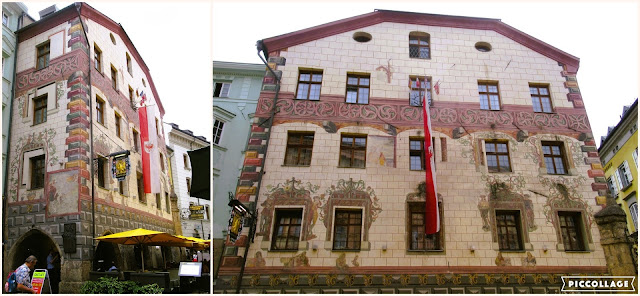




































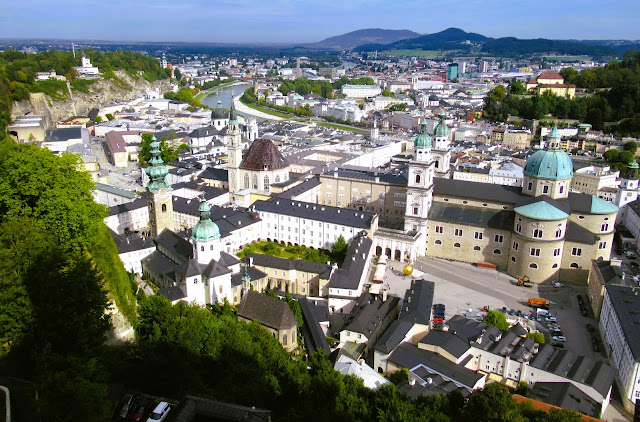











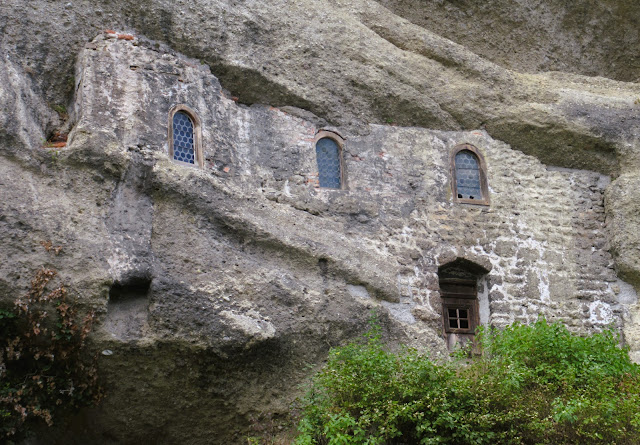





























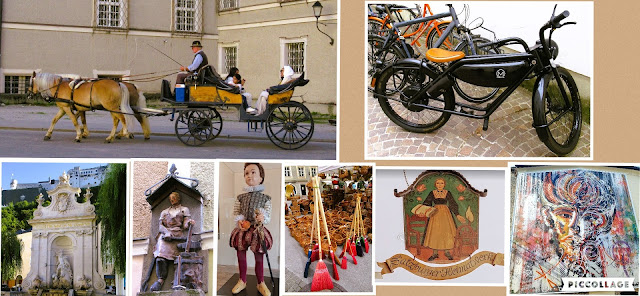









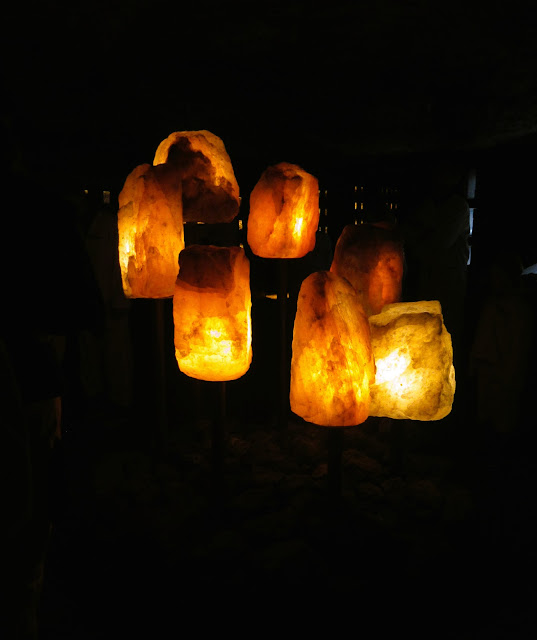













































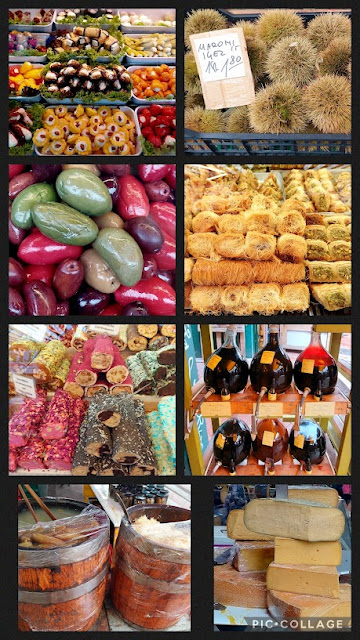




















No comments:
Post a Comment